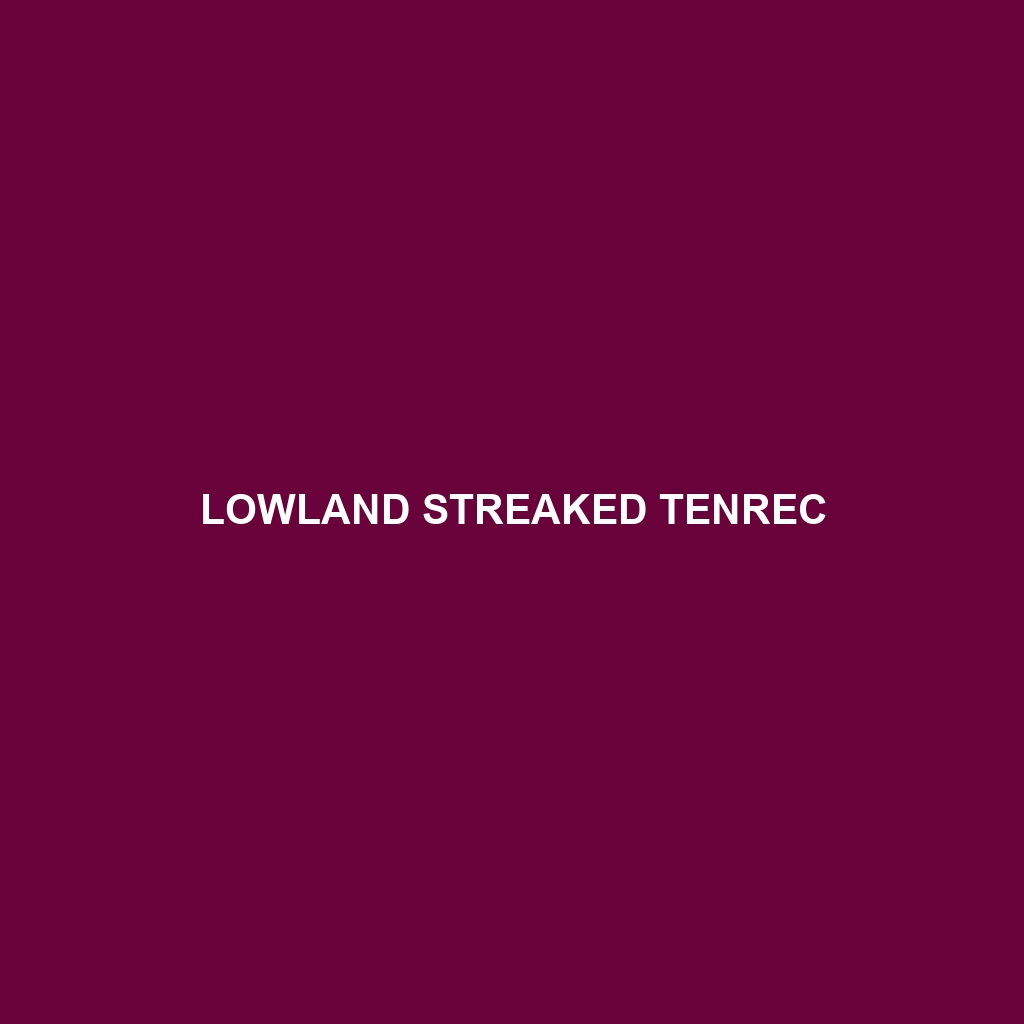Lowland Streaked Tenrec
The Lowland Streaked Tenrec (Hemicentetes semispinosus) is a remarkable small mammal native to the rainforests of Madagascar. This unique creature stands out for its distinctive coloration and specialized behaviors, which make it an intriguing subject for both scientists and nature enthusiasts. As a member of the Tenrecidae family, it shares some similarities with other tenrecs but boasts a range of unique adaptations that enable it to thrive in its specific ecological niche.
Physical Characteristics
Size: The Lowland Streaked Tenrec is a small mammal, typically measuring around 14–17 cm (5.5–6.7 inches) in length, excluding the tail, which can add an additional 1.5 cm (0.6 inches).
Weight: They usually weigh between 120–160 grams (4.2–5.6 ounces).
Coloration: This tenrec is easily identifiable by its striking black and yellow streaked pattern. Its body is covered in a mix of fur and spines, with vivid yellow stripes running longitudinally along its back against a dark backdrop.
Special Features: The most notable feature of the Lowland Streaked Tenrec is its erectile quills or spines. These spines are not only a defense mechanism but are also used in a unique form of communication known as stridulation, where the tenrec produces sounds by rubbing its spines together.
Behaviors
Social Interactions: Unlike many other tenrecs, the Lowland Streaked Tenrec is known to be relatively social. They often live in small family groups and exhibit cooperative behaviors, especially during the breeding season.
Feeding Habits: These tenrecs are primarily insectivorous, with a diet that mainly consists of earthworms and other invertebrates. They use their sensitive noses to forage through leaf litter and soil.
Ecological Role: As insectivores, Lowland Streaked Tenrecs play a crucial role in controlling insect populations in their habitat. Additionally, by digging and foraging, they help in soil aeration, which benefits plant growth.
Habitat
Geographical Range: The Lowland Streaked Tenrec is endemic to the eastern rainforests of Madagascar.
Preferred Environment: They thrive in lowland tropical forests, often favoring areas with dense underbrush and moist soil, which are ideal conditions for their prey and provide ample cover from predators.
Adaptations
Sensory Adaptations: Their acute sense of smell aids them in locating prey underground or hidden within leaf litter.
Defensive Mechanisms: The tenrec’s spines serve as both a physical deterrent against predators and a means of communication. When threatened, they can erect these spines to appear larger and more formidable.
Reproductive Adaptations: They have a relatively short gestation period of around 55 days, which allows them to quickly produce offspring and sustain their population.
Conservation Status
The Lowland Streaked Tenrec is currently classified as “Least Concern” by the IUCN Red List. However, like many species in Madagascar, they are potentially threatened by habitat destruction due to logging and agricultural expansion. Conservation efforts are important to ensure that their natural habitats are preserved.
Fun Facts
Sound Communication: The Lowland Streaked Tenrec is one of the few mammals known to use stridulation (producing sound by rubbing body parts together) to communicate, a behavior more commonly associated with insects and certain fish.
Unique Family: The Tenrecidae family is incredibly diverse, encompassing species that resemble everything from hedgehogs to otters, and even shrews, despite being more closely related to elephants and aardvarks!
Nocturnal Nature: These tenrecs are primarily nocturnal, using the cover of darkness to forage and avoid predators.
By highlighting these attributes, your website can provide a comprehensive and engaging overview of the Lowland Streaked Tenrec, attracting attention from those interested in unique wildlife and conservation efforts.
